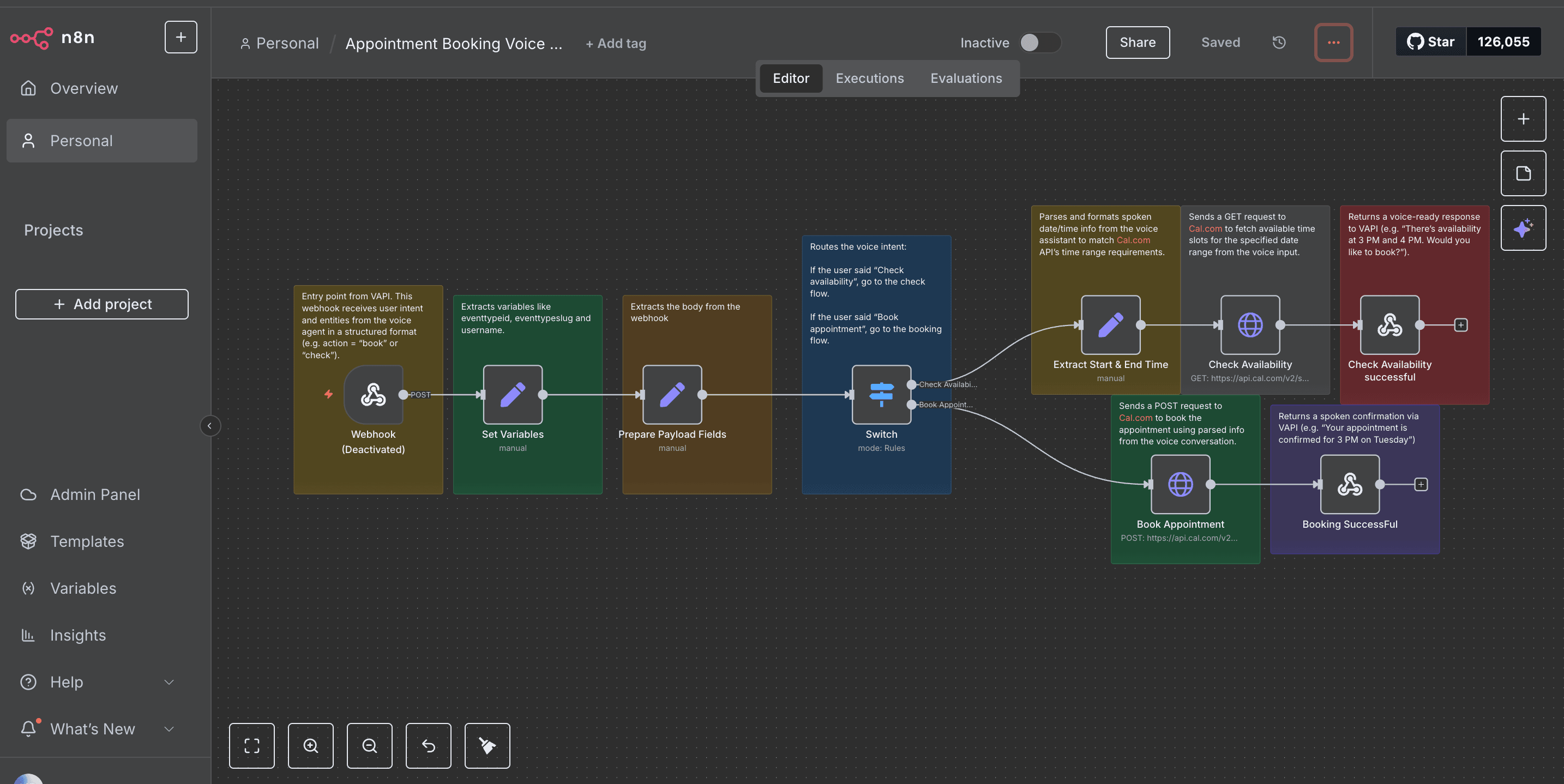This template uses VAPI and Cal.com to book appointments through a voice conversation. It detects whether the user wants to check availability or book an appointment, then responds naturally with real-time scheduling options.
Who is this for?
This workflow is perfect for:
Voice assistant developers
AI receptionists and smart concierge tools
Service providers (salons, clinics, coaches) needing hands-free scheduling
Anyone building voice-based customer experiences
What does it do?
This workflow turns a natural voice conversation into a working appointment system.
It starts with a Webhook connected to your VAPI voice agent.
The Set node extracts user intent (like “check availability” or “book now”).
A Switch node branches logic based on the intent.
If the user wants to check availability, the workflow fetches available times from Cal.com.
If the user wants to book, it creates a new event using Cal.com's API.
The final result is sent back to VAPI as a conversational voice response.
How to use it
Import this workflow into your n8n instance.
Set up a Webhook node and connect it to your VAPI voice agent.
Add your Cal.com API token as a credential (use HTTP Header Auth).
Deploy and test using VAPI’s simulator or real phone input.
(Optional) Customize the OpenAI prompt if you're using it to process or moderate inputs.
Requirements
A working VAPI agent
A Cal.com account with API access
n8n (cloud or self-hosted)
An understanding of how to configure webhook and API credentials in n8n
Customization Ideas
Swap out Cal.com with another booking API (like Calendly)
Add a Google Sheets or Supabase node to log appointments
Use OpenAI to summarize or sanitize voice inputs before proceeding
Build multi-turn conversations in VAPI for more complex bookings
